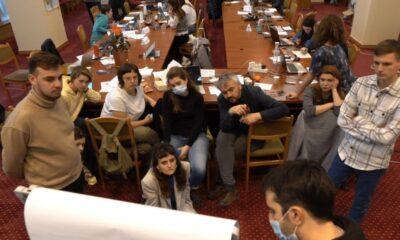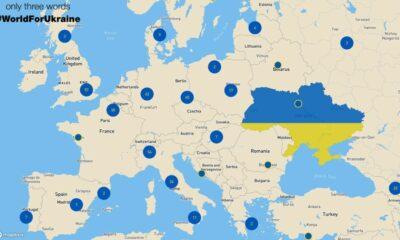Economy
10 reasons why the euro is existentially important for Germany
Reading Time: 3 minutesThe effort to defend Europe’s single currency has changed the continent’s makeup overnight. First, the bailout of Greece, then the huge $1-trillion aid package that will be made available to Eurozone countries facing instability. A big step toward a more centralized, federalist Europe was taken.
By Thomas Kleine-Brockhoff and Thomas Straubhaar
Germany’s future lies in Europe
The effort to defend Europe’s single currency has changed the continent’s makeup overnight. First, the bailout of Greece, then the huge $1-trillion aid package that will be made available to Eurozone countries facing instability. A big step toward a more centralized, federalist Europe was taken. The path toward a fiscal union is particularly hard to sell in Germany; the memory of the hyperinflation of the 1920s is still powerful. Until now, German Chancellor Angela Merkel has defended her support of the aid package with the so-called “TINA” argument: “There Is No Alternative.” This negative rhetoric will not be enough to convince the population. Instead, Germans should be convinced by their leadership that the euro is existentially important for them. Here are 10 reasons why:
1. What strengthens Europe also strengthens Germany. A vital EU safeguards German interests, making an economically powerful Germany the European pivot. The creation of the European Union healed political wounds after World War II, allowed Germany to reconcile with its neighbors, and led to an unprecedented period of peace and security in Europe. All of Europe has benefited from this–and none more than the reunited Germany.
2. German interests are best protected by open markets, a stable political framework, and economic prosperity in Europe and beyond. This alone is the foundation on which German businesses leverage their excellent international competiveness.
3. The EU has advanced the opening of European markets, which have served as the foundation of German economic success. As a result, Germany and Europe have experienced an era of extraordinary success over the course of the last half-century.
4. The economic and monetary union is better than its reputation in Germany. It has helped Germany deal with the stresses of post-1989 reunification. An extended period of wage restraint, social peace, and an innovative entrepreneurial class that has invented new products and discovered new markets has contributed to this development. As a result, the reunited Germany has once again become globally competitive.
5. If prices, wages, and, consequently, real buying power and living conditions converge within the EU, and a new middle class emerges in Eastern Europe, Germany will become the largest beneficiary of the European Union, allowing German businesses to enjoy the benefits of a domestic market of 500 million people. Indeed, since the advent of the industrial age, Germany has never had better marketing conditions.
6. The euro has not caused hidden inflation, contrary to what many Germans suspect. In fact, Europe’s single currency has led to a long phase of price stability. The euro has deprived member states of the option of reacting to the competitive advantages of German firms by devaluating their national currencies. Thus, the euro has been a catalyst for change and modernization, especially in the less competitive regions of Europe. More competitive countries, Germany among them, have to adjust less because they have already done so in the past. Therefore, Germany enjoys an export boom, not only within Europe, but globally. This has been a massive boost for employment in Germany.
7. New actors have stepped onto the world stage, including China, India, Russia, and Brazil. As a consequence, Europe’s position is weakening. On the other hand, due to its economic power and size, Germany has become Europe’s dominant economic power. With power, however, comes responsibility. The biggest beneficiary of a peaceful, stable, and prosperous Europe with a common economic space for 500 million people must also be an anchor and guarantor of the European integration process. That is true in good times and in bad.
8. The pursuit of a narrow national interest does not serve Germany well in its European role. Germany’s interest is best served when it looks out for all of Europe. To do so it must help to produce European “public goods.” Such goods include stability, solidarity, and the commitment to solve conflict through cooperation.
9. Germany must continue to lead Europe to a higher level of integration. After World War II, a goal of European policy was to integrate Germany into a larger structure in order to contain it. The creation of Europe meant the emergence of a system of continental checks and balances. During the current Great Recession, Europe suddenly longs for German leadership. That has not happened since the Napoleonic Wars. It is a reality of a transformed Europe that sees Germany as a partner and no longer as a threat. The benign side of Germany’s power is the discovery of the age of integration in Europe. The political challenge of the day is to harness this power.
10. Environmental and demographic challenges, cross-continental migration, and the financial market crises are examples of the same stark fact: national solutions are no longer sufficient to address global problems. If Europe wants to influence global decision-making, it can only do so on the basis of a closer union. Whoever allows for the economic disintegration of Europe destroys Europe’s status as a global power. Germany must play its part in Europe in order for Europe to play its part on the world stage.
—-
Thomas Kleine-Brockhoff is a Senior Director for Policy Programs at the German Marshall Fund of the United States in Washington, DC. Thomas Straubhaar is the Director of the Hamburg World Economic Institute and a Fellow at the Transatlantic Academy in Washington, DC.
Economy
Moldova will receive a disbursement of 36 million euros as part of the the Economic Recovery Plan
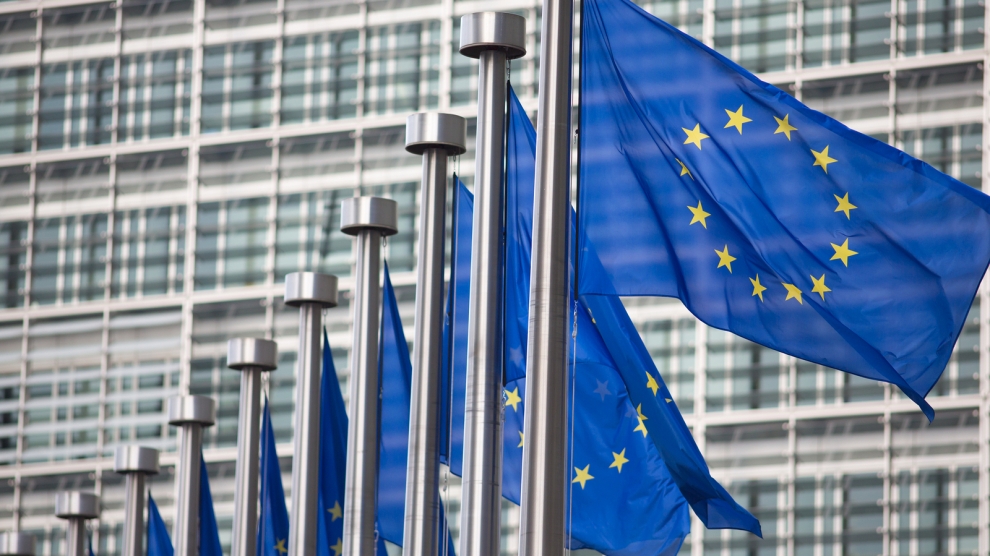
This week, the European Commission approved the disbursement of 36 million euros in grant money for the Republic of Moldova. The announcement was made by Deputy Director-General for Neighbourhood Policy and Enlargement Negotiations at the European Commission, Katarina Mathernova, who paid an official visit to the Republic of Moldova between September 13-15, together with Managing Director for Russia, Eastern Partnership, Central Asia, Regional cooperation and OSCE, at the European External Action Service, Michael Siebert.
The EU officials had meetings with President Maia Sandu, Minister of Foreign Affairs and European Integration, Nicu Popescu, Speaker of Parliament, Igor Grosu, Prime Minister of the country, Natalia Gavrilita, as well as key representatives of Government, international financial institutions and the civil society, according to a press release issued by the Delegation of the European Union to the Republic of Moldova.
Beside such topics as the EU-Moldova relations and prospects, the priorities of the reform agenda of the new Moldovan Government, preparations for the Eastern Partnership Summit at the end of the year and the Transnistrian conflict settlement, the officials also discussed the EU assistance in support of reforms and the Economic Recovery Plan for Moldova, which was announced in June with a total EU support of 600 million euros over the next 3 years.
“The first measures under the Economic Recovery Plan will shortly materialize, with the expected disbursement of 36 million euros in grant money under budget support programmes to support the authorities’ efforts to fight against the consequences of the pandemic. Moldova can count on EU’s assistance on its path to reforms and to recovery, bringing tangible results to citizens,” Katarina Mathernova stated.
The plan is based on assistance provided by the European Union through various bilateral and regional instruments, aiming to mobilize the funds in the form of grants, loans, guarantees and macro-financial assistance.
“The Economic Recovery Plan for the Republic of Moldova involves much more, not just this financial support provided immediately. It must help digital transformation, strengthen infrastructure, energy efficiency, education and support small and medium-sized enterprises,” the EU official also said.
As Prime Minister Natalia Gavrilita informed, “The Economic Recovery Plan and the 5 flagship initiatives for Moldova in the Eastern Partnership will directly contribute to the reform and consolidation of institutions, stimulate long-term socio-economic development, bring direct benefits to citizens, and unleash new economic opportunities through promoting the green agenda and digitization. Small and medium-sized enterprises (SMEs) have been hit hard by the crisis. Promoting and diversifying access to finance and reducing collateral requirements will be essential in supporting economic operators. We are grateful to the EU partners who will launch two programs to support 50 000 independent Moldovan SMEs to adapt to the new conditions.”
President of the Republic of Moldova, Maia Sandu, welcomed the decision of the European Union to disburse about 745 million lei in grant money, as the official page of the President’s Office announced. “EU support comes after a long period of freezing of European assistance, caused by former governments. We managed to relaunch the political dialogue with the European Union and resume financial assistance. The Republic of Moldova is gradually regaining the trust of its strategic partners. This European support is also a signal of encouragement for the new Government team in its commitment to clean up the institutions, fight corruption and launch development programs in the country,” said Maia Sandu.
Photo: unknown
Economy
Romania and Moldova signed a partnership memorandum pledging to cooperate in promoting their wines
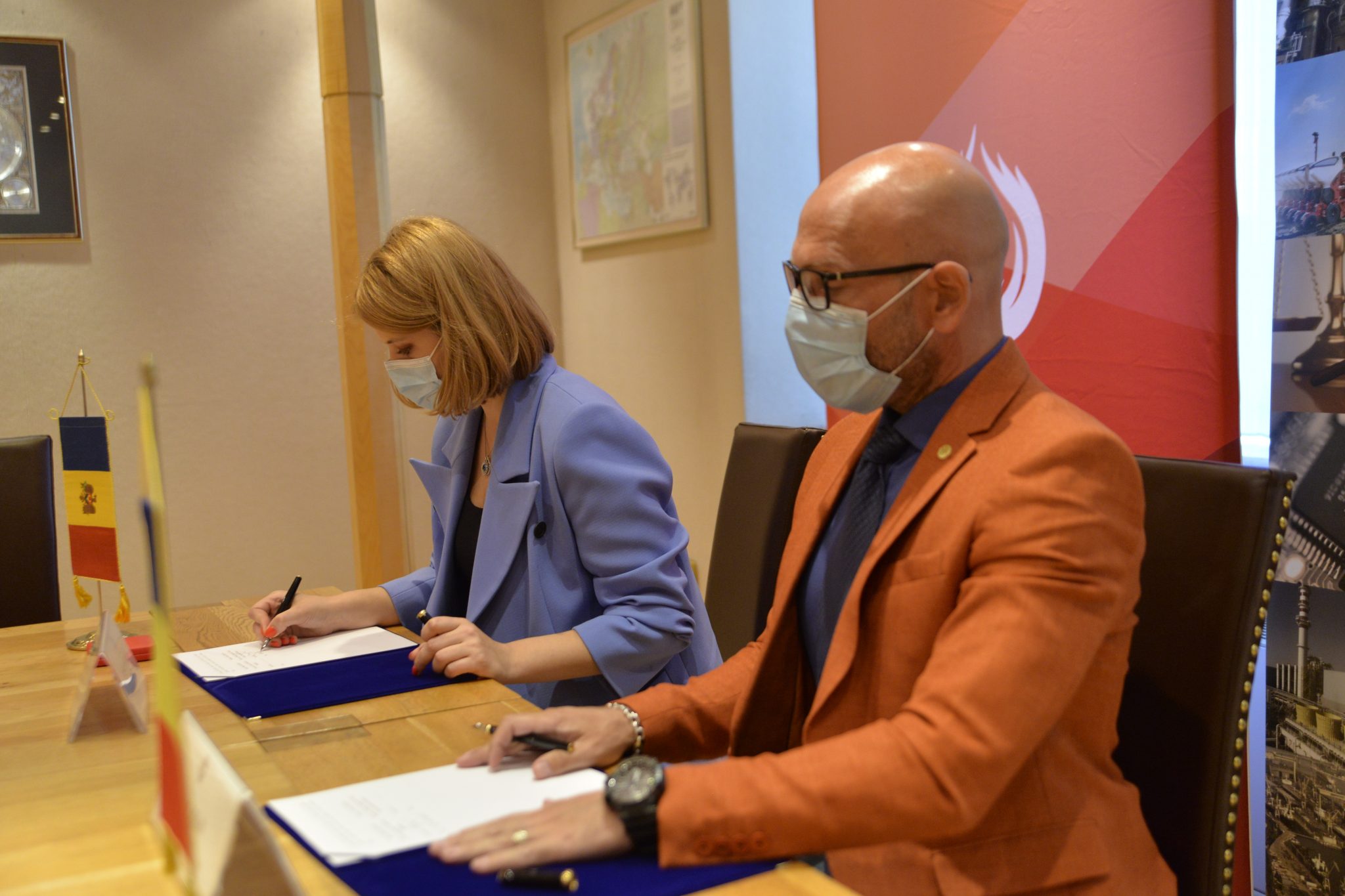
The Chamber of Commerce and Industry of Romania (CCIR) and the National Office for Vine and Wine (NOVW) of the Republic of Moldova signed, last week, a memorandum of cooperation on organizing joint promotional activities in the markets of common interest, as the CCIR announced.
China, Japan or the USA are just some of the markets targeted by the Romanian and Moldovan institutions. The memorandum also involves advertising activities for wines from common indigenous varieties, promoting the oeno-tourist region, developing a tourist route in the two states, exchange of experience, study visits, and mutual support in identifying new export opportunities. “We are very confident that this collaboration between our organizations will lead to sustainable economic growth and a higher degree of well-being among Moldovans and Romanians,” claimed Deputy Secretary-General of CCIR, Bogdan Visan.
On the other hand, Director of the NOVW, Cristina Frolov, declared that no open competition with Romania is aimed at the governmental level of the Republic of Moldova. “This request for collaboration is a consequence of the partnership principle. Romania imports 10-12% of the wine it consumes, and we want to take more from this import quota. Every year, the Romanian market grows by approximately 2.8%, as it happened in 2020, and we are interested in taking a maximum share of this percentage of imported wines without entering into direct competition with the Romanian producer,” the Moldovan official said. She also mentioned that Moldova aims at increasing the market share of wine production by at least 50% compared to 2020, and the number of producers present on the Romanian market – by at least 40%.
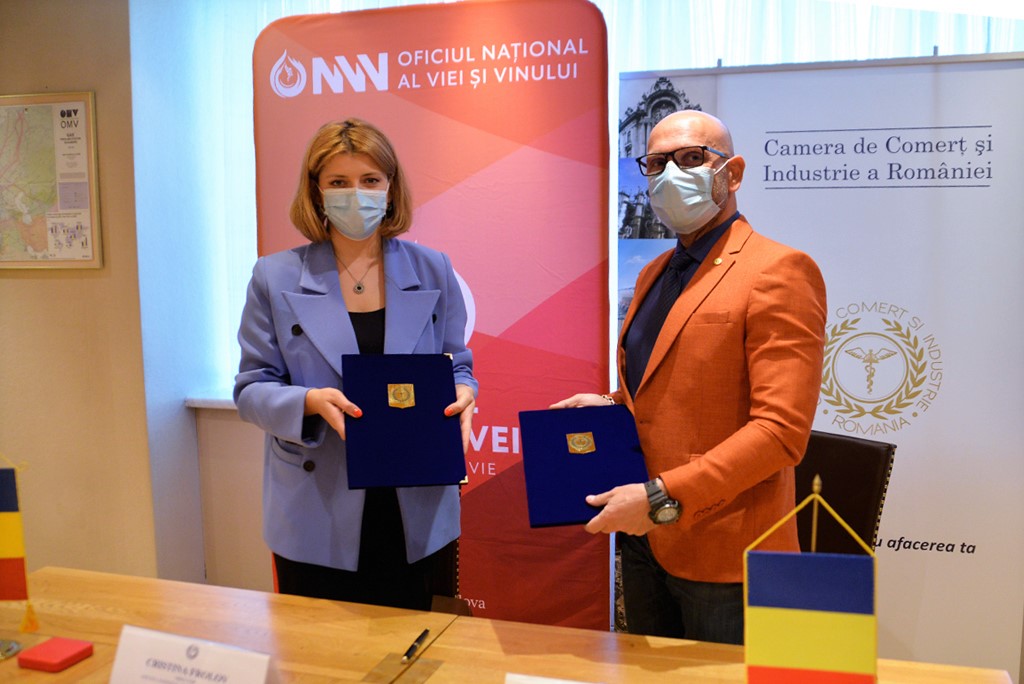
Source: ccir.ro
**
According to the data of the Romanian National Trade Register Office, the total value of Romania-Moldova trade was 1.7 billion euros at the end of last year and over 805 million euros at the end of May 2021. In July 2021, there were 6 522 companies from the Republic of Moldova in Romania, with a total capital value of 45.9 million euros.
The data of Moldova’s National Office of Vine and Wine showed that, in the first 7 months of 2021, the total quantity of bottled wine was about 27 million litres (registering an increase of 10% as compared to the same period last year), with a value of more than one billion lei, which is 32% more than the same period last year. Moldovan wines were awarded 956 medals at 32 international competitions in 2020.
Photo: ccir.ro
Economy
Moldova’s hope to be a top walnut exporter and its main difficulties

The Republic of Moldova has perfect weather conditions for growing walnut trees, that creating a great potential of walnut production and trade, especially on international markets, where the demand is way higher than the product’s supply. National and international experts believe that the country’s walnut production industry is on the verge of important transformations, which could lead to increased yields, quality and competitiveness worldwide.
According to authorities, Moldova exports 34-35 thousand tons of walnuts in shell, which is about 7% of the total export of fruit and 5% of the total export of horticultural products. The export value is assessed as being $120 million, that being 57-60% of the total fruit export value and about 50% of horticultural export value. Most of walnut crops are exported to the EU countries, such as France, Germany, the Netherlands, Romania and Austria. The country’s exports were among the world’s top 10 when it comes to the highest dollar value of the product during 2020.
Viorel Gherciu, Minister of Agriculture and Food Industry, pointed out that the production in the domestic walnut industry has increased by 55% in the last five years, which ranks Moldova among the main producers in the world.
“The biggest opportunity for this industry is that we are in the geographical proximity of the largest walnut import area in the world, which is the European Union, with almost 40% of total imports in the world. We are on the EU border, with privileged relations, with an Association Agreement. We already enjoy a good relationship in working with European importers, they trust our processors. A very close collaboration has been created and this is, in fact, the guarantee for those who invest in the area,” claimed the president of the Walnut Producers Association, Oleg Tirsina.
The data provided by the National Bureau of Statistics show that there are 34.7 thousand hectares of walnut plantations in the country. 20.90 hectares are represented by orchards. 75% of planted orchards are formed of old varieties trees. 30-35% of the exported production comes from orchards, the rest comes from individual farmers and plantations along the roads. This means that the quality of walnut production is not at its maximum potential. Developing commercial plantations through orchards modernization and extension of walnut varieties would provide double yield and better quality, experts say.
Governmental support in the form of subsidizing solutions, foreign investments and credit options are indispensable for the industry development. One of the financing options is the credit line of the European Investment Bank Project. Since 2016, 15 producers and processors of nuts, almonds and hazelnuts have benefited from these loans with the total amount of investments worth 8.7 million euros. A further extension of the project would provide another 60 million euros for the modernization of the horticultural sector in general and for harvesting organic walnuts in particular.
Photo: heymoldova.com


